389,00€ w/o VAT
Fabriquée en France
Advantages of the smart remote crackmeter for monitoring cracks remotely
3 wireless sensors in 1Monitors crack spacing, temperature and ambient humidity
Ready to useWireless crackmeter with battery, communication module, SIM card and 1-year subscription included
Configuration in just a few clicksNo IT knowledge required, configuration from a PC or smartphone using the application
Battery life of up to 8 yearsRemote crackmeter can operate without changing the battery for over 8 years
Remote parameter settingModification of measurement frequency and remote data transmission directly from the application
Customisable graphsAdjust and download graphs to suit your needs
Data extractionDownload raw data in Excel or CSV format
Alert threshold managementSet an alert threshold and send an e-mail if it is exceeded
Complete screws and bolts suppliedCan be installed on a hollow or solid support, flat or at an angle, using the screws supplied |
Technical specifications
|
Introducing the R1 gauge – smart remote crackmeter
|
4-step sensor installationDesigned to be very easy to install by drilling just two holes, the R1 gauge can be set up in just a few clicks using a smartphone or PC with internet access. All the steps are described in detail in the instructions supplied:
|
Fixing the remote crack meterThe R1 gauge can be positioned either with the plunger on the right or left (‘upside down’ in relation to the sticker). The gauge is supplied with 2 types of plugs: 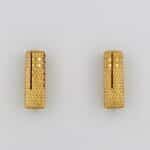
Brass plugs for solid support requiring Ø8 mm holes
Required equipment not supplied for fixing to a solid support with brass plugs: drill, Ø8 mm drill bit, 6 pan 3 mm spanner, Torx T10 spanner. 
EPDM plugs with nuts and washers for hollow supports (can also be used for solid supports) requiring Ø13 mm holes.
Equipment not supplied for fixing to a hollow (or solid) support with EPDM plugs: drill, Ø13 mm drill bit, 6 pan 3 mm spanner, Torx T10 spanner. Two grub screws are supplied:
Classic flat fixingTo fix the gauge, drill the holes, screw in the grub screws, add a nut to the longer grub screw and screw the joint with lugs onto the shorter screw.
Then insert the piston into the lugs of the joint and secure the assembly with the 2nd part of the articulated bracket.
Finally, slide the gauge ball into the 2nd grub screw and secure with a washer and the 2nd nut.
To make it easier to adjust the measurement range, the piston head can be moved by +/- 5 mm.
There is a mark on the piston. When this mark is level with the housing tube (see 2nd photo), the possible range is approximately -7 mm when closing and +15 mm when opening.
Corner mountingWith the articulated bracket supplied, the wireless crackmeter can easily be fixed at an angle without the need for additional accessories.
Fixing with extension
By using a 20cm extension sold separately, it is possible to fix the R1 gauge in cases where the fixing centre distance is greater than 18cm and up to 32cm. For extensions greater than 20cm and up to 40cm, please contact us. |
Shear tracking (Y movement)
With the shear kit for the R1 gauge, it is possible to remotely track movement on the Y axis using the screws supplied in the kit and an R1 gauge. So with an R1 gauge positioned in the conventional way and an R1 gauge with a shear kit, it is possible to remotely track movement on the 2 X and Y axes. |
Misalignment tracking (Z movement)
With the misalignment kit for the R1 gauge, it is possible to remotely track a misalignment or tapping movement on the Z axis of the plane. The principle is to use the R1 gauge fixed in such a way as to measure the movement on the Z axis. The square supplied for the mounting is 25cm long, so the necessary space must be provided. |
Subscription and network coverageThe subscription included with the wireless crackmeter is multi-operator and works throughout Europe. When powered up, the gauge performs a network attachment phase and connects to the network with the best connectivity.   The R1 gauge works with the LTE-M and Nb-Iot protocols, which are specific protocols for communicating connected objects that use operators’ 4G antennas. In France, you can check the coverage of an address using the service provided by the government at: https: //monreseaumobile.arcep.fr/. After selecting ‘Mobile Internet’ and ‘4G network’, you can select the operator (Orange, Bouygues or SFR) and then enter an address in the search bar to check network coverage. In the event of a one-off problem with the network, the data is saved and sent on to the next measurement. If the problem persists, the gauge will automatically restart a network attachment procedure to change operator if necessary. The default subscription is valid for 1 year. At the end of the subscription, the old data remains visible but the new measurements are no longer sent. Email alerts are sent before the end of the subscription to warn the user. Subscriptions can be extended directly from the application by paying by credit card or by using an order form generated directly from the application. The price of a 1-year subscription is €49 excluding VAT. |
Monitoring cracks remotely with the applicationAll the data collected by the 3 sensors (distance, temperature, humidity) can be accessed via the https://saugnac.app application, available on smartphone or PC. As with all our gauges,access to the application is free. Even if the subscription for sending data from the gauge ends, your account and the data remain accessible. Graphs can be configured and downloaded directly in image format for integration into your reports. Raw data can be downloaded in Excel or CSV format for further processing. You can also easily share a report, with access to the data via a link generated in the application. The report is dynamic, with data updated the moment the user clicks on the link. The application offers the option of setting an alert based on whether a threshold has been exceeded or fallen below in relation to the first measurement. When this threshold is exceeded, an email is automatically sent.
|
Frequently asked questions
The R1 gauge uses the LTE-M or Nb-IoT protocols, which rely on operators’ 4G antennas. Generally speaking, if you can pick up 4G with your phone, the R1 gauge should be able to connect to the network. You can also check whether the area you want is covered by 4G to see whether the gauge will be able to work. Europe and most of the world are covered: to find out if your country is well covered, don’t hesitate to contact us. Note that the gauge is also able to pick up signals where a phone is not receiving the network (car park, cellar, etc.). In these particular cases, it is not possible to know in advance whether the gauge will be able to connect. The only way is to test the connection with the gauge at the exact location where it is installed (in enclosed or underground areas, moving a few metres can change the connectivity).
In the event of a one-off problem with the network, the R1 gauge saves the data and sends it on to the next measurement. Depending on the settings, the gauge stores between 5 days and 1 month of data.
At the end of the subscription, the measurements are no longer sent. However, in order to check that the subscription is up to date, the gauge will continue to connect to the network regularly and therefore consume battery power. If you no longer need the gauge at the end of your subscription, we recommend that you switch it off to conserve battery power. The application and data remain accessible even if the subscription is terminated. The subscription can be reactivated at any time.
You can renew your subscription directly in the application, either by paying by credit card, or by sending us your order form.
It is possible to order a subscription for more than 1 year. Please contact us for details.
The R1 gauge is designed to be reusable. You need to use the archive function in the application, then switch the gauge off and put it away. Installation on a new site is carried out in the same way as for the first installation. The installation guide supplied with the R1 gauge describes the steps step by step.
The battery is easy to change if you are careful. It is explained in the instructions. However, if you don’t want to carry out this operation, you can order the battery, send us back your gauge and we’ll do the change free of charge by sending you back the gauge with the new battery. |
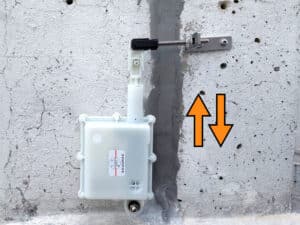
Shear monitoring kit for R1 gauge
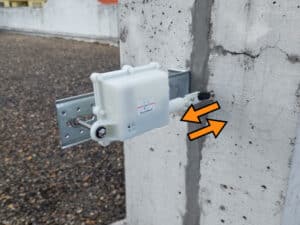
Misalignment kit for R1 gauge
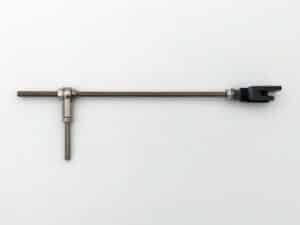
R1 gauge extension kit
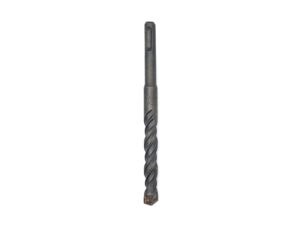
Ø13 mm SDS+ drill bit for R1 EPDM plugs
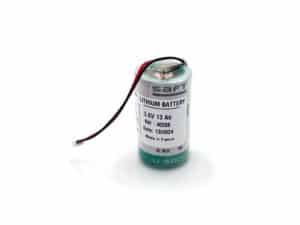
SAFT battery with connector for R1 gauge
Pour obtenir un devis ou nous poser des questions sur le produit, n’hésitez pas à nous contacter :
If you would like a quotation or have any questions about the product, please contact us: